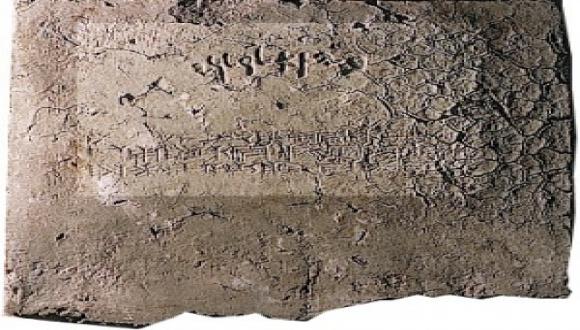Aramaic Impressions on Bricks from Babylon
The most impressive discovery of the German excavations at Babylon in the years 1899-1917 is without doubt the Ishtar Gate and the processional way leading up to it, a grandiose construction of Nebuchadnezzar, which was restored and rebuilt in the Berlin Museum [1]. The excavations also yielded a vast number of other finds, most of which remain unpublished. Virtually all buildings in Babylon are constructed of mudbrick. It has been an old Mesopotamian custom to impress the bricks, mainly those destined for public buildings, with the king’s seal. Traditionally, the inscriptions on those stamps were in cuneiform. In the eighth century the Aramaic language become an official tongue in the Assyrian empire, a role it continued to fill in the days of the succeeding Babylonian and Persian empires. It is no wonder, then, that in the sixth century some of the brick stamps carry Aramaic legends. Surprisingly, the latter are all non-royal. There are more than 300 bricks from Babylonian and Neo-Babylonian periods with Aramaic impressions. Some of the bricks with Aramaic and figural impressions are kept in the Berlin Museum. Only about ten were published so far. All readable legends constitute of personal names. I was asked by the museum to undertake the publication of this material together with the museum’s Assyriologist Dr. Joachim Marzahn.
Aims and importance
As noted, my aim is the final publication of this rich material – the illustration of all impressions, as well as the study of the palaeographical, chronological, onomastic and historical aspects. The detailed catalogue has already been prepared, including all the illustrations. The Aramaic impressions appear on the bricks beside cuneiform impressions of three Babylonian kings of the sixth century, Nebuchadnezzar, Neriglissar and Nabonidus. They are thus well dated. The Aramaic legends, in turn, are in the lapidary or monumental script. This script is well documented since the fifth century, and to some extent also in the ninth through the seventh centuries, but not in the sixth. As chance would have it, only one monumental inscription from this time was hitherto known. It came from the Beirut antiquities market, hence its value is less than that of provenanced inscriptions. Our bricks, on the other hand, come from a controlled excavation, they are further dated by the cuneiform impressions of Babylonian kings, and their large number offers a better view of the material. These brick impressions close the gap in our knowledge of the monumental Aramaic script in the sixth century, and serve to explore its relation to the known examples from the preceding and succeeding centuries. This part of the study is accomplished as well. The melange of Babylonian and Aramaic names on the impressions (all in Aramaic script) is expected in sixth-century Babylon. Some of the Aramaic impressions contain names hitherto documented only in cuneiform, whereas other names seem to be new altogether. About half of the onomastic part of the study has been achieved. The find spots within the city of Babylon of most bricks were noted by the excavators. I hope that plotting the various bricks on the city plan will lead to a better understanding of the architectural history of sixth-century Babylon, and manifest the identity of the persons mentioned in the impressions as well as the use, for the first time in Mesopotamian history, of Aramaic in impressed bricks. This part of the study is yet to be accomplished.
The cataloguing, reading and drawing of the cuneiform impressions is done by my German colleague.
[1] Vorderasiatisches Museum, Staatliche Museen zu Berlin



